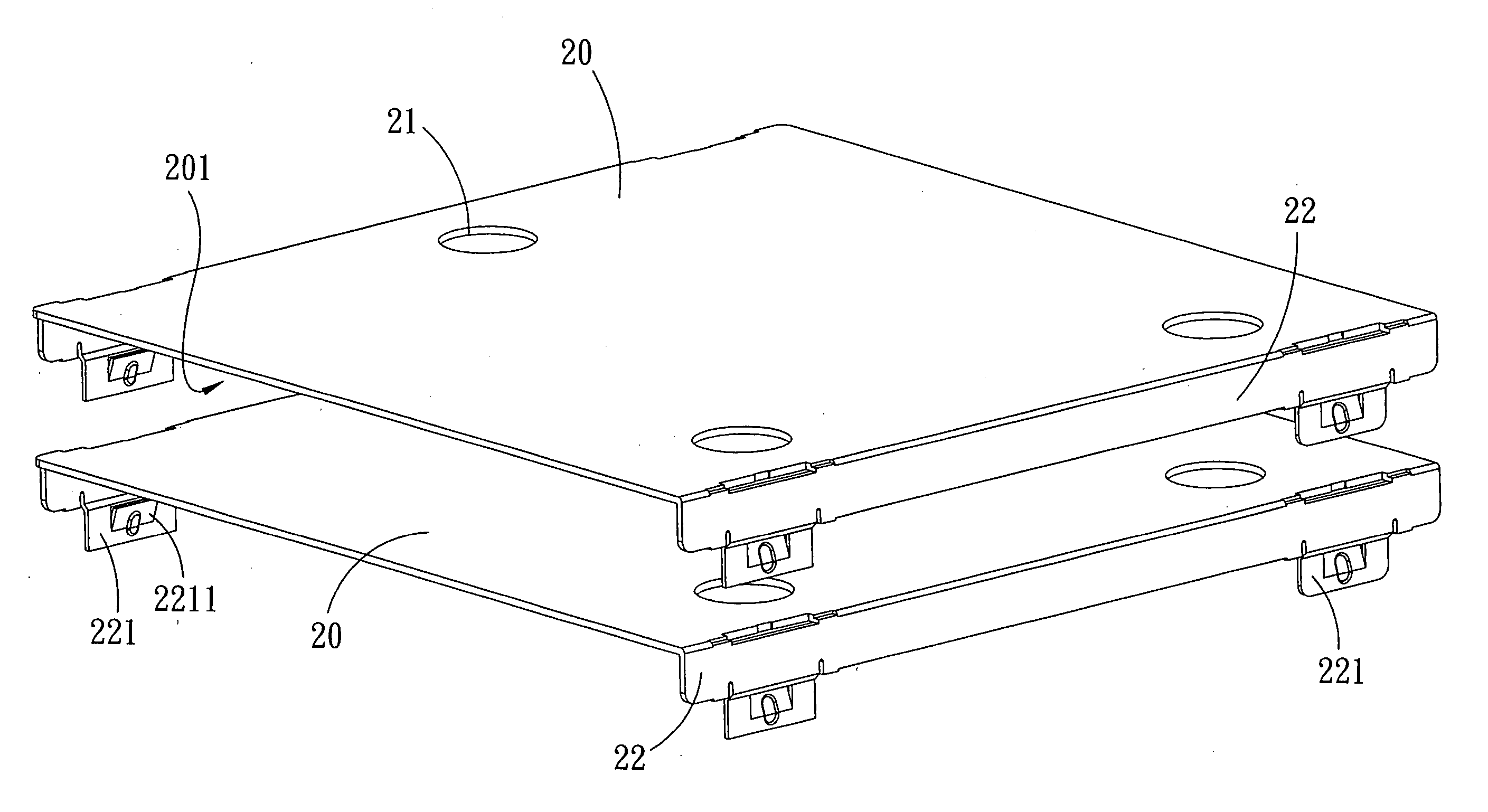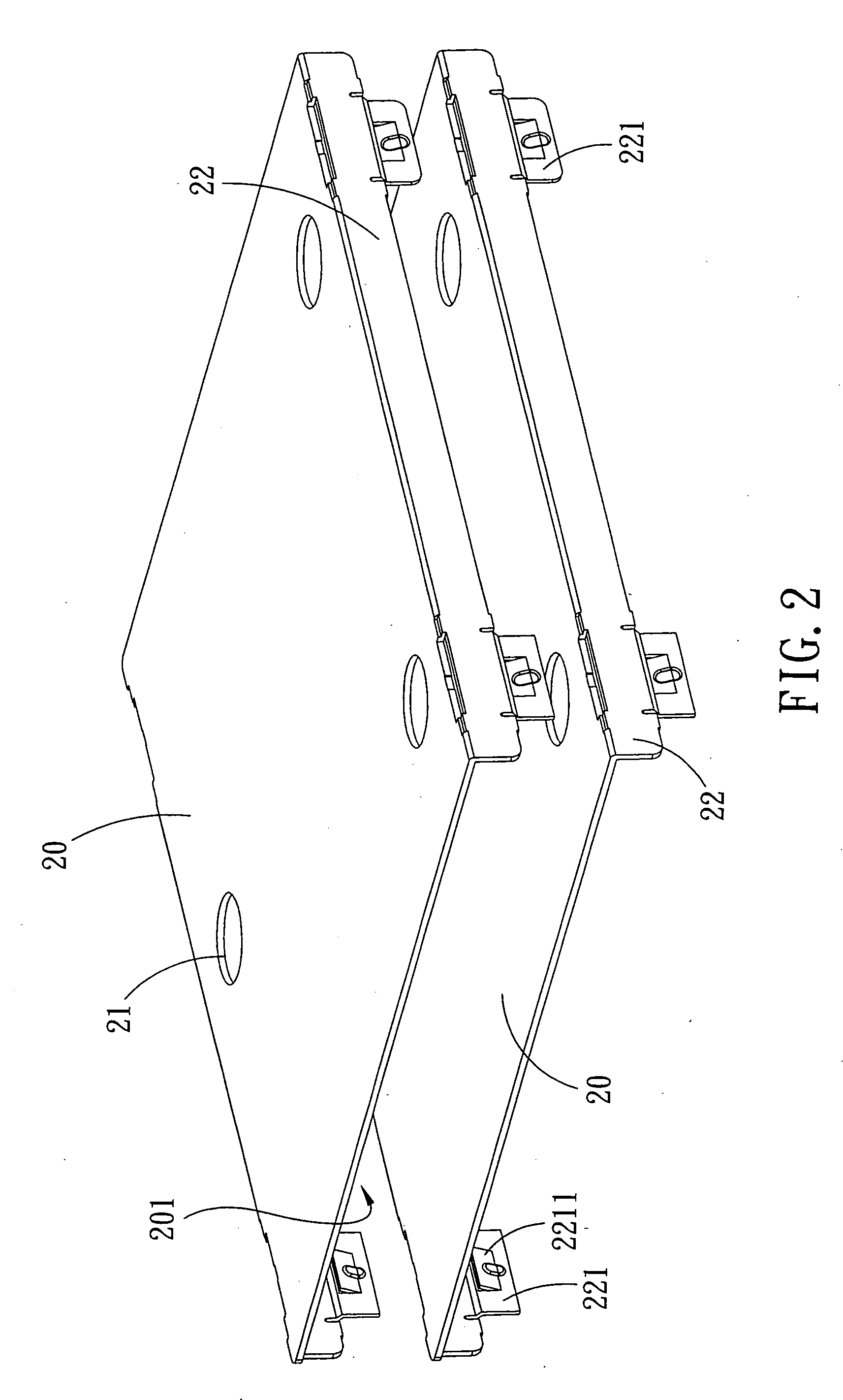Radiating fin assembly
a technology of radiating fins and assembly parts, which is applied in the direction of electrical apparatus construction details, light and heating apparatuses, laminated elements, etc., can solve the problems of deformation of the fastening lug, inconvenient assembly and disassembly, and still the conventional radiating fins, so as to achieve easy assembly/disassembly and the effect of easy assembly
- Summary
- Abstract
- Description
- Claims
- Application Information
AI Technical Summary
Benefits of technology
Problems solved by technology
Method used
Image
Examples
Embodiment Construction
[0017] Referring to FIGS. 2-5, a radiating fin assembly in accordance with the present invention comprises a plurality of radiating fins 20 stacked together.
[0018] The radiating fin 20 is a plate formed with a plurality of guiding holes 21 at the upper surface thereof. At two opposite sides of the radiating fin 20 is formed a folding edges 22, and at both ends of the folding edge 22 is formed a locking protrusion 221 connected to the folding edge 22 by an inward inclined neck portion 222. A flexible slot 223 is defined in the folding edge 22 and located at both sides of the locking protrusion 221, and a plurality of notches 23 are defined in the radiating fin 20 and located correspondingly to the locking protrusions 221, so that the locking protrusions 221 of one radiating fin 20 can be engaged in the notches 23 of another radiating fin 20.
[0019] A flexible hook 2211 is formed on each of the locking protrusions 221 and located correspondingly to the undersurface 201 of the radiati...
PUM
 Login to View More
Login to View More Abstract
Description
Claims
Application Information
 Login to View More
Login to View More - R&D
- Intellectual Property
- Life Sciences
- Materials
- Tech Scout
- Unparalleled Data Quality
- Higher Quality Content
- 60% Fewer Hallucinations
Browse by: Latest US Patents, China's latest patents, Technical Efficacy Thesaurus, Application Domain, Technology Topic, Popular Technical Reports.
© 2025 PatSnap. All rights reserved.Legal|Privacy policy|Modern Slavery Act Transparency Statement|Sitemap|About US| Contact US: help@patsnap.com



